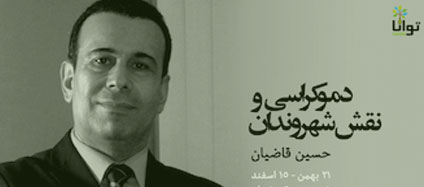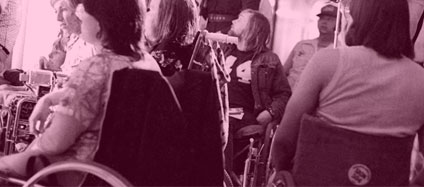Participants in the Instructor-Led Course:
Before the fourth class session, please read the materials on this page and complete the assignment.
Click here to watch George Washington University’s Kathleen Schafer discuss
Talents and Skills
Highlights:
What is your vision? What big-picture need are you addressing?
What is your strategy? What is necessary to achieve your vision?
What are your tactics to meet your needs? What actions will move you through each point on your strategy?
Finally, consider logistics. How many people do you need? How much money? What other resources are necessary?
You don’t need to be able to do everything. In fact, as a leader, you need to understand others’ skills and make the most of them to build strong teams.
Draw people together who can contribute to the vision, strategy, tactics, and logistics.
Leadership Principles at Work: Respect others’ contributions to the team
In 1986, artist Lily Yeh founded a small summer art camp in Philadelphia, Pennsylvania. Originally, her goals were modest, but as she began to build a team, she was able to expand her project into the Village of Arts and Humanities, which serves more than 10,000 people annually.
When I stepped into the project, I was lacking in every way. Yet this weakness became my most powerful tool… It provided opportunities for people to meaningfully join the project; it gave people the opportunity to develop and exhibit their strengths and allowed for the maturation of leadership amongst the participants. This participatory process provided a way to begin to repair the frayed social fabric of the community, a way for people to reconnect with each other through working together.1
Yeh realized that not only could she not do everything, but that her ostensible weaknesses actually provided opportunities to build a strong, empowering team that honors input from many.
Leadership Team Assessment
Idealist Leaders (NF) Possess a diplomatic leadership intelligence: They see major issues “in the distance” and are able to connect with a variety of people to bring them together to begin the process of change. They keep people focused on the “heart” of the issue and the interconnectedness of everyone needed to address the challenge.
Rational Leaders (NT) Possess a strategic leadership intelligence: These individuals are able to put together new systems or strategies for problems that have never been addressed or to address chronic issues in new ways. They like to fix what is broken or “not working” in their view.
Artisan Leaders (SP) Posess a tactical leadership intelligence: Artisans are the people who instinctively understand the next best step to take in the moment. These individuals clearly access current realities and know how to move forward in the best possible way.
Guardian Leaders (SJ) Possess a logistical intelligence: As the “engines of society” these leaders know who to make things happen efficiently and effectively as their keen awareness of the resources it will take to make each step allows them to be fully prepared for daily operational demands.
Anyone can lead from any point on the Cycle of Change. Your role as a leader and the demands of your team vary depending on YOUR leadership style. As you understand your strengths, it is easier for you to allow those with different strengths to come forward to participate at the right time in the process.
Keep these roles in mind as you build your team, and remember that a diverse group of members playing a range of different roles will strengthen your efforts. How will your team more effectively operate with you as the leader, given your leadership style and where it falls on the Cycle of Change?
Click here to watch George Washington University’s Kathleen Schafer discuss
The Importance of Teams
Highlights:
Leadership is about coordinating everyone in the team so that they all bring their skills to the table.
You can’t create change in anyone else; that is their choice. But you can inspire change.
You can’t create change alone. You are only one part of the whole; you don’t have to do it all yourself.
Recognize that everyone has something important to offer. When you value others’ contributions, they will be dedicated and passionate about creating change, and the team will be stronger.
Click here to watch George Washington University’s Kathleen Schafer discuss
Teams and Conflict
Highlights:
Conflict is natural and will occur in any group, so don’t be afraid of it. It is an opportunity to grow and develop.
Remember that when team members have different ideas, there is no right or wrong answer. Consider what can be learned from each perspective, and integrate everyone’s ideas to create a solution. Have a “win-win” attitude, not a “win-lose” attitude.
Make sure everyone can present their ideas openly in a respectful environment, then discuss them and find a solution that honors everyone’s viewpoint.
Managing Conflict
How to Lead in Conflict
By: Chris W. Bell, Director of Interactive Learning, Leadership Connection
What do you picture when you think of conflict?
Most people automatically associate conflict with a fight or a war. Faced with such challenges, it’s no wonder many individuals fail to reach their full potential because they are afraid of conflict. If you desire to lead, don’t fear conflict, but rather embrace it as the opportunity that it is.
Conflict is natural and unavoidable because you are dealing with two or more people who bring different experiences and expectations to the table. The experience of conflict doesn’t have to be angry or nasty. Because each has different experiences, and thus unique skills and talents to share, conflict can be an opportunity to find a better way to function. To unleash the power of conflict, realize your true responsibility as a leader.
As a leader, it is not your responsibility to be better than or above those on your team, it is your responsibility to empower them and unleash their talents, passions and strengths. Negative conflict is usually a result of win-lose thinking: There can only be one right answer, so obviously you are wrong. Help turn conflict into a growth opportunity by helping your teammates see their own uniqueness and what they have to offer. If their own strengths are recognized and they are praised for their contribution to the overall team mission, they are more likely to listen to ideas of others. When team members assert their ideas, focus on the positive aspects and on your appreciation of their willingness to share. This fosters the communication environment that makes win-win thinking possible.
Your goal as a leader is to find the best way to meet the needs of those in your group. Seek to understand the needs driving the conflict and use all available information to address those underlying needs. Don’t get caught up in ego and the How. Spend most of your energy on the Why. Pay attention to the temperament of your teammates, make sure you are focused on their emotions, needs and motivations. As people feel heard and understood, they will drop the defenses they have built up over time and will be freed up to contribute their best efforts. As a leader you will be more effective, more respected, and your brand of leadership will always be in demand.
For more information, please see Marshall Rosenberg’s website on non-violent communication.
Assignment 4 – for Participants in the Instructor-Led Course:
1. Put your team members into the Cycle of Change based on their leadership style to identify which roles are missing in your team, so you can bring in new team members and support existing team members to bring the best of their skills to the group at the right time to ensure success for the individual and the group.
2. Post a minimum of two discussion points on the forum. They can either be new threads or responses to others’ threads. Feel free to discuss any issues related to team building. For example:
What teams have you led or participated in? How many members? What project were you working on?
What conflicts did you see in teams you participated in? How were they resolved? How could they have been resolved better?
What do you plan to do now to build a team? How do you plan on developing team members’ abilities and attracting new members?
Good luck!
Tavaana hopes that this course has helped you gain additional understanding of yourself and your ability to lead change. Remember that you can come back to this site at any time to review the materials and refresh your memory. If you have any suggestions for improving the course, please contact us.
For participants in the instructor-led course:
Remember that you can keep interacting with your classmates in the Tavaana forums. Feel free to keep up the discussion even after the class has ended! You can also continue to send your instructor e-mail at the address she gave you in class.
Tavaana wishes you the very best in your civic leadership!
1 Milewski, Jennifer. The Quantum Leadership (PDF). Institute for Sustainable Communities, 2006. Pp. 12-13.
Go back to Part III: Taking Action.







